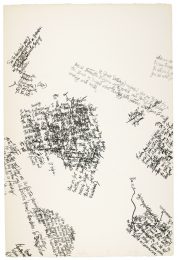

John Cage was not only a composer but also a music theorist, writer, and artist. He was one of the most important composers of the 20th century and a key figure in the post-war avant-garde. His most well-known composition, 4’33” (1952), included musicians simply listening to the sounds in a room for 4 minutes and 33 seconds. He amplified common household things live for Cartridge Music (1960). Cage, who was influenced by Zen Buddhism, Indian philosophy, and Duchamp’s readymades, promoted the use of chance techniques in music by incorporating noise, found noises, and unconventional instruments.
The artist Robert Rauschenberg and the dancer Merce Cunningham, who was also his longtime romantic companion, were two significant early collaborations. In 1961, Cage released his first book, Silence, and in the 1970s, he started turning literary works into music, including those of Thoreau and Joyce.